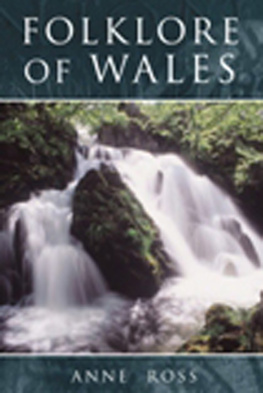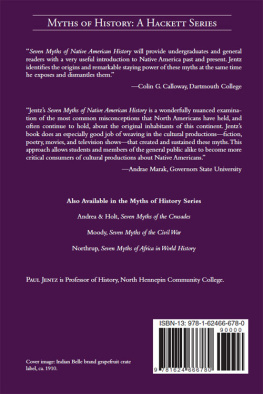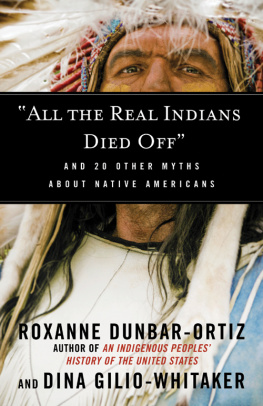Way before Christopher Columbus stumbled upon the land now known as North America, there were people who have been living off the land for centuries, and they are the Native Americans. In this book you will be learning all about the real first North American settlers; youll learn about their early history, their diverse cultures, the difference between the tribes, and you will also find out about some of the most famous Native American figures in history.
I hope that by the end of this book, you will have a deeper understanding about the Native American culture, or better yet, it sparked an unquenchable thirst for knowledge within you.
Howd They Get Here?
If you ask kids who was the first person to discover America, the first name that would usually pop in their heads is Christopher Columbus; in fact, quite a number of adults would give you the same answer. Technically speaking, Columbus did stumble upon North America on his journeys (he was actually looking for Spice Islands and not for North America in particular), but when he got off the beach there were already people waiting for him. To add insult to injury, Columbus called the natives Indians because he honestly thought that he was in India. Columbus story aside, the real mystery here was how the Native Americans got there.
The Clovis-first Theory
The conventional theory of how the Native American people first set foot in North American is the Clovis-first theory. The Clovis was an ancient race of people who seemingly just popped out of nowhere and into the annals of history, and as sudden as they seemed to appear, they also vanished in the same manner.
According to the radiocarbon dating done on a couple of Clovis artifacts, their civilization appeared at around 9,200 B.C. and suddenly vanished from the earth a mere 500 years later. Scientists theorize that the Clovis came from a tribe of hunter-gatherers from up north in Siberia, and they stumbled into Northern America during the Ice Age. During that time, the sea levels were so low because most of the Earths water was still frozen in gigantic glaciers in the polar ice caps.
Since the sea levels were so low during the Ice Age, there were numerous land bridges that used to connect the present continents to each other. The Clovis were thought to have taken the Bering land bridge, which is now under the body of water known as the Bering Strait. Scientists think that the Clovis migrated south from Siberia because they were following their main source of food, which were mastodons and mammoths. They found that North America was teeming with herds of these wild beasts so they decided to settle there.
The Kennewick Man
Recent advances in scientific research and discoveries are now disputing the once accepted Clovis-first theory, and the most plausible of the lot is the discovery of the Kennewick Man.
In 1996, a group of archaeologists dug up the ancient remains of a man who they believed to be 9,000 years old. The odd thing about this ancient man is that the skull had a long cranium and somewhat narrow face, which are the typical features of people from either Europe or India. American Indians, on the other hand, tend to have rounder skulls and wider cheekbones.
First Interactions with People from Other Countries
As mentioned earlier, many people believe that Christopher Columbus was the first foreigner to have ever encountered the Native Americans. However, many historians believe that he wasnt the first person to discover North America, he was just the first one to call for a press conference. In fact, Columbus was not even aware at the time that he was in North America; he was actually searching for an alternative route to India, which is why he mistakenly called the natives Indians, and this misappropriated term stuck for the longest time.
What most people do not know is that the Native American population is not just one big collection of people, but rather they are a collection of different tribes, and each of these tribes hold different beliefs and cultures. There are so many different tribes of Native Americans that they will not all fit into this book. We will however, discuss some of the largest tribes, including their cultures and traditions.
Navajo
At more than 300,000 people strong, the Navajo is the largest Native American tribe in North America. Their name actually came from the Pueblo Indian word that means farmlands, and they got this distinction because unlike their closest relatives, the Apaches, the Navajos were mostly farmers and lived in permanent settlements. The Navajos traditionally called themselves Din (which means people in their language); however, they do use Navajo to describe themselves when they speak in English.
The Navajo originally came from the Four Corners region, which is a huge area that encompasses the states of Arizona, Utah, New Mexico, and Colorado. Although they have since branched out of their native lands, there are still many Navajos living in their ancient territories today.
Government
In the past, the Navajo only had one leader, a chief, which a council of tribal elders would agree elect. Unlike European monarchs, who relied mostly on their ministers when it came to actually running their kingdoms, the Navajo chief was hands-on. He (only men can become chiefs) would usually act as mediator when there were misunderstandings within the tribe, he would also need to decide on important matters regarding the welfare of the people. Now, instead of chiefs, the Navajo nation elects their own president and a tribal council.
The land where the Navajos (and other Native American tribes), known as a reservation, is like a small (nearly) sovereign country. This means the Navajos have their own government, and their own police force. However, since they are also citizens of the United States, the Navajo must still follow federal laws.












